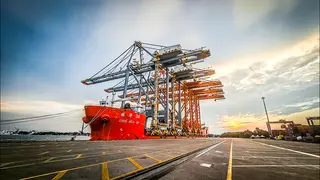Last year, as India was making its over-speeding fines harsher, road drivers in Delhi found an unexpected fairy Godmother in a technology giant - Google. A feature in Google Maps alerted drivers before they bumped into a police van that was patrolling against speeding vehicles.
The feature, which pre-empted potential over-speeding challans by locating police’ speed checking teams, may have been a saviour for defaulting drivers to avoid fines, but many experts dub this as a cheat trick which interfered with traffic police’ methods to implement road safety and felt it should be pronounced illegal.
Saviour or a cheat-trick
Maxwell Parreira, former police officer with experience in traffic, told BusinessLine, “I would consider these alerts on the part of Google as illegal interference on actionable official work. Having said that, this should not be mistaken with other alerts which are regarding accidents, obstacles, congestion or other hindrance (regarding) the flow of traffic.”
Increase in technology interface in our daily lives has led to questions whether use of phones to navigate distracts more than helping drivers.
In June 2019, Jagdambika Pal, a Parliamentarian asked “whether most of the drivers of Ola and Uber violate law by the use of phone to find the location while driving, and whether the Government finds it necessary to check such violation as it is dangerous for the driver as well as other pedestrians”.
Responding to this, Road Transport and Highways Minister Nitin Gadkari, who was set to introduce a Motor Vehicle Amendment regime in Parliament, left the decision to the States and their law enforcement agencies noting that transportation by road is a State Subject under the Constitution of India. The Minister also apprised the Parliament that the new law had a provision making use of “hand held devices” illegal.
To judge whether a new technology is legal or not has to be looked at from the realm of whether it aids road safety or not, say experts.
Google Maps
Apps that alert drivers regarding where a Police team is waiting contribute also to road safety by warning them to slow their vehicles.“Police should remain ahead of the curve and up their own technology to be able to detect and restrain offenders. Besides for every one offender who is alerted and evades being caught, there will be many who will improve and not commit and offence in the first place,” former National Highways Authority of India (NHAI) Chairman Raghav Chandra told BusinessLine.
Another Road Ministry official wondered how this service is any different from the practice in smaller cities where people return when they see police teams checking helmets and also warn others.
“Regarding the alerts that you get in some apps (Google Maps) regarding where speed checking patrol vans are placed, it is important to know whether the technology helps achieve the purpose of road safety. Is it simply pushing drivers to slow down at select places by telling them the location of a speed patrol van and helping them avoid hefty fines? Or is technology helping achieve a greater good of road safety,” another former NHAI member, with experience in driving road safety audits, told BusinessLine .
India is a fast growing market for Google Maps, with its users reportedly doubling in 2017.
Several drivers in Delhi, who had been alerted last year regarding presence of police checking teams do not get such alerts now. However, it is not clear if Google Maps still provides any such feature anywhere in India. When asked whether it still continues to provide such a service anywhere in India, Google spokesperson maintained that they have not announced any such feature in Google Maps. Waze, a company acquired by Google in 2013 that provides services, also allows its users to inform each other regarding police control or other road hazards, according to Waze India.
Traffic tech policies
Globally, the discussion on legality of alerts provided by various navigation apps including Google Maps revealing the location of ‘speed checking authorities’ is not new.
Enforcement authorities in various countries including the US have flagged their concerns on the issue. In February 2019, police department in New York, United States wrote to Google objecting to this feature. France has banned such features from being provided in any navigation apps. India is yet to take a clear policy stand on this matter as well as other technology interfaces used on roads today. Sooner or later, traffic authorities across the world would have to play catch up with technologies used on road, and evolve their policies for road-safety.
In October 2019, this feature, which was available for Google Maps on Android phones, was also reportedly made available in iPhones .
In India, as roads get wider, signal free and better, drivers tend to over-speed, which also leads to tragic road crashes. Driving beyond speed limits or over-speeding is a major cause of deaths and injuries due to accidents in India, a country which accounts for maximum number of road accident deaths globally, according to Road Transport and Highways Ministry data. In 2018, 1.51 lakh people died in India in road accidents, of which 97,588 fatalities (64.4 per cent) were due to over-speeding, says Road Accidents in India data.
( With inputs from Twesh Mishra )








Comments
Comments have to be in English, and in full sentences. They cannot be abusive or personal. Please abide by our community guidelines for posting your comments.
We have migrated to a new commenting platform. If you are already a registered user of TheHindu Businessline and logged in, you may continue to engage with our articles. If you do not have an account please register and login to post comments. Users can access their older comments by logging into their accounts on Vuukle.